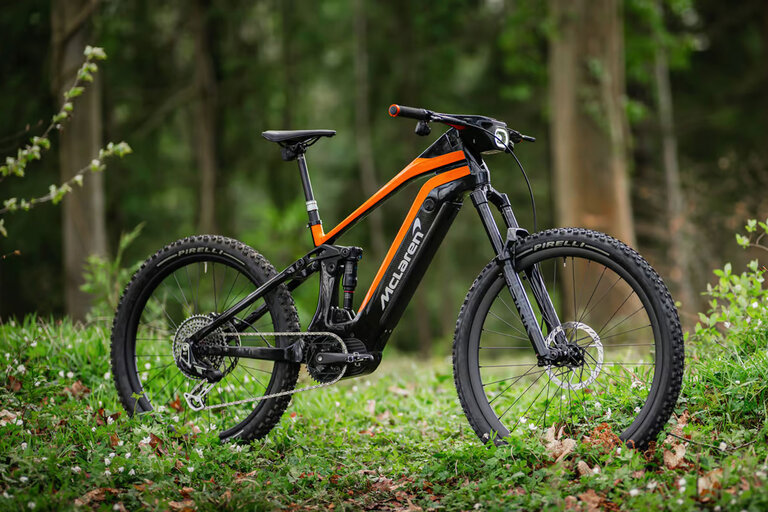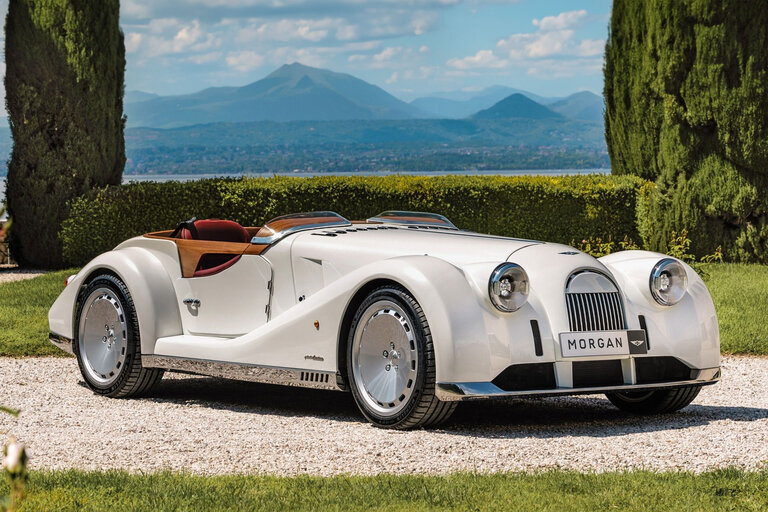
From the December 2005 issue of Car and Driver.
A three o’clock schoolyard showdown between these two Motor City bullies wasn’t a question of if, but rather when. For a time, the Viper and the wickedest of the Corvette line, the Z06, kept their distance because there were major differences between the two. The Viper was an 85K roadster, the Z06 a 53K coupe. Sure, some mags compared the two, but the cars were just too different to make an even fight.
But now these two inhabit the same turf. The current-generation Viper has just been released with the option of a fixed hardtop. It’s still a 510-hp, V-10-powered bruiser, but now its structure is a little stiffer, thanks to that fixed roof. It looks outrageous, fantastic even, and carries a big sticker of $86,995.
On paper, the Corvette Z06, which is built only as a coupe, is the early favorite. Although its pony count of 505 is nearly identical to the Viper’s, the Z06 has critical advantages. Its greatest strength is its weight or, more specifically, the lack thereof. Corvette engineers went banzai turning a standard Vette into the Z06. Although they added heavier brakes, wheels, tires, and other parts to handle the more powerful engine (the standard Vette makes 105 fewer horses), the Z06 also went through an intense weight-reduction program.
The frame of the standard Corvette is made of steel, and the Z06’s is constructed of aluminum (it doesn’t weigh 136 pounds, as we mistakenly reported in our October 2005 issue, but is 136 pounds lighter than the steel one). Lightweight magnesium castings are used for the engine cradle and roof structure; the front fenders are made from carbon fiber; the engine’s connecting rods and intake valves are titanium. The Z06 you see here weighs 3147 pounds, which is 323 less than the Viper’s heft. Yes, the Viper’s 535 pound-feet of torque work out to 65 more than the Corvette’s, but usually the horsepower-to-weight ratio (6.2 pounds per horsepower for the Vette handily beats the Viper’s 6.8) determines speed. To cap it off, the Z06’s base price is just $65,800, which makes it the least-expensive 500-hp production car on the market.
We’re all used to the notion that you get what you pay for. So what, if anything, did the Corvette crew leave out to whittle down the Z06’s price? Or what does the Viper provide for the extra $21,195?
We should pause here for a moment and mention the elephant in the room, namely, the other Detroit powerhouse, the Ford GT. We know from previous experience that in terms of performance it’s at least the equal of, and in some cases the better of, these two. Some might say that it deserves to be in this fight, but not at $153,345. When was the last time you were shopping for two cars and one cost more than double the other? Yeah, we know, never.
We put the Viper and the Z06 through a 700-mile grind that included our usual battery of performance tests, lapping at the undulating thrill ride of a 2.0-mile racetrack called Grattan Raceway Park, then on to a few hours of southern-Ohio back roads, not to mention a good deal of highway slogging.
We ran this test side by side with another comparison, between the Mazda MX-5 and Pontiac Solstice. It was an insightful experience. We’ve always assumed that road inhalers like the Viper and Vette quickly lose their luster when they’re not out on a track generating numbers. And we proved it. Both of these bruisers are about eight inches wider than the Miata, and those eight inches take up every bit of available back-road run-off room. So we ended up driving the big dogs at far below their potential, realizing that full speed in these cars would have posed too great a risk for innocents in the vicinity. Sure, you could push it, but then you’d be a jackass that we wouldn’t care to know.
At the track, though, the brutes provided a greater level of fun and challenges than the little guys. The cornering and straight-line speeds are faster, and that in itself is a kick. Also, the Miata and the Solstice are underpowered enough that in most cases, any time you’re on the gas, you have the throttles pinned to the floor. It’s the opposite for the 500-hp cars, where sloppy throttle work will send you spinning. Both are fun, but getting the most out of the fast cars simply takes more concentration, so when you get it right, you thump your chest a little harder.
Okay, the bell has rung, it’s three o’clock, and a crowd has formed. Let’s see who’s the toughest on the playground.
Second Place: Dodge Viper SRT10
The Viper was the surprise of the day at Grattan because it was far easier to drive and handle on the track than we had expected.
Just look at the thing. It’s testosterone on wheels. From the 13.6-inch-wide rear tires to the never-ending hood, there’s so much attitude that one test driver said, “This car makes me nervous.”
Getting in does nothing to calm those willies. If the car has been run hard, you have to maneuver very carefully over a side sill that’s been heated up by the internal exhaust pipe, and the sill is hot enough to scorch your calves. Despite the car’s 75.2-inch width, there’s not much room inside, and those who are nervous in tight spaces will not be soothed by the low header and humongous center tunnel that give the interior a close-quarters feel.
By all appearances, the Viper is not a welcoming, coddling machine and looks far more menacing than the Corvette. So when we did the odd gymnastics exercise required—slide your legs under the dash without touching the hot sill—to begin the timed lapping session, we were nervous. We had just come from an unnerving experience with the skittish Z06 Corvette—we’ll get to that in a minute—which had not boosted our confidence to handle these beastly machines.
Once on the track, though, we found the Viper to be as friendly as a yellow Lab—obedient, eager to please—and it would do what you told it to, without fail. “Surprisingly easy to drive around the track and very forgivable as the rear end rotates,” flip-flopped the guy who had said the Viper made him nervous.
That comment was a huge compliment, considering Grattan’s track is far from smooth. There are lots of undulations, small hard-to-see rises, lots of elevation changes, and a couple of spots where a car can almost get airborne. If any track can illustrate a car’s handling weaknesses, Grattan is it.
Our only gripe about the Viper’s handling is that in some turns it tends to understeer more than we like. Otherwise, no portion of Grattan flummoxed the suspension. We’re not pro drivers, but we were all comfortably pushing the Viper, enjoying the g-forces and appreciating that we had an ally in speed. Sure, the Viper’s 1:27.50 lap time was 1.50 seconds slower than the Vette’s, but given the choice between the two of them on the track, all of us preferred the Viper. We scored the Viper’s handling a 10 out of 10 and gave the Z06 a 6.
Unfortunately, handling was the only performance area where the Viper prevailed; it trailed the Z06 in every speed category. The Viper’s 3.8-second 0-to-60 sprint is still plenty quick, but it’s almost a half-second slower than the Vette’s. Some of that difference comes down to an issue of engine rpm and gearing. The Vette, for example, can reach 60 mph in first gear, whereas the Viper must use up a time-consuming gearshift. But in the quarter-mile, where the gearing isn’t so much an issue, the Viper’s 12.1-second time trails the Vette’s by 0.3 second. As speeds increase, the Corvette’s advantage widens. To hit 150 mph, the Viper needs 20.2 seconds, the Z06, 17.9. In a drag race, the Viper loses.
Then there’s that toasty side sill. We would gladly give up the styling of that side exhaust if it meant we wouldn’t have to clamber over it. We also discovered that the air conditioning was only able to keep up when we were cruising on the highway. In the midst of driving the Viper hard, we got baked by the heat coming from the tranny tunnel and that damn sill.
It was a bummer to experience the Viper’s day-to-day shortcomings because in some ways the car was tremendously satisfying. The seats are far more supportive than the Vette’s, and the pedals are adjustable, so you can obtain a very accommodating relationship among seat, steering wheel, and pedals. Perhaps most surprising was the Viper’s ride. It’s firm but not harsh and proves once again that a tight-handling car doesn’t have to ride like an ox cart.
In the end, though, the Viper lost too much ground. Its features list is spartan, its price is high, its interior and luggage compartment are tight, and it could stand to lose a few pounds. It may have lost this fight, but it’ll always be the playground bad boy.
First Place: Chevrolet Corvette Z06
This brawl was over even before the teachers broke it up. In every performance category except one, the Vette won or tied the Viper.
We’re still buzzing over the Z06’s ferocious 3.4-second burst to 60 mph. That’s two-tenths quicker than the Z06 we tested in October. Both test Z06s, however, achieved the same 125-mph quarter-mile trap speed, so we don’t think the latest one was a ringer (we probably just got a little better at launching the thing).
What’s most amazing is how quick the Z06 feels. Considering that the Vette and the Viper hit the quarter-mile within a few tenths of each other, what we’re about to say is going to sound strange, but the Vette feels a lot stronger than the Viper. One editor likened it to “having a booster rocket at the end of your foot.”
If the road is straight, the throttle is your thrill ride. Jumping on it at any point thrusts the car forward with such fury that four-letter expletives fly uncontrollably from your mouth. But on the racetrack, the gas pedal is the trigger of the gun that’s pointed to your head. Squeeze the gas a little too much at corner exit, and you’ll find yourself instantly in trouble.
On our first drive of the Z06 in Europe, we noticed the Vette’s chassis didn’t make the driver feel confident, but on smooth racetracks, the chassis was more or less benign. But Grattan’s track gave the Z06 fits. It never felt comfortable or sure of itself and gave us all disconnected, spooky feelings that were only exasperated by that booster rocket waiting to be unleashed. “Only qualified drivers should be handed the keys,” warned Phillips.
If the Z06 encountered any kind of bump or lump in the pavement as it was exiting a corner, the result was a nearly instantaneous outward snap of the tail. It was so sensitive to bumps that the Vette uncovered lumps in the pavement we never knew were there—even though we’ve done hundreds of laps at Grattan in stiffly sprung race cars.
For our first few laps, we wisely set the Delphi stability-control system to its competition mode. That allows some sliding but can save the driver. Had we shut it off, we probably would have stuffed it. Not yet aware of the sensitivity to bumps and the throttle, we were saved by the system numerous times.
Stability control intervened often enough, however, that it slowed us down, so to establish a lap time we turned it off and did five laps. Every circuit of the track was quicker than the previous, but the faster we went, the sweatier our palms got. We knew there were spots where we could go faster and pick up some time, but we chickened out. When we reeled off a 1:26.00 lap, our knees were audibly knocking and we parked it. We’ve heard that the best GM drivers can go 2.50 seconds a lap faster at Grattan. But after our eight laps, we were unable to extract that quick a lap from this 505-hp sports car. Then we got in the Viper, which instantly proved to be the exact opposite, a real sweetheart on the track.
So if you’re eager to take a Z06 to a race course, you might want to consider modifying the suspension or trying different tires because our sense is there was too much consideration paid to a cushy ride and perhaps that’s why it’s such a handful.
In normal driving, however, the Z06 becomes a pussycat. GM added some sound insulation to the center tunnel that wasn’t there in our October Z06, and this dramatically reduced the gear rattle and heat we experienced before. “Amazingly civil for anything producing 505 horsepower,” one of us wrote in the logbook. The only problem was the tires, which hummed loudly on concrete but were fairly quiet on asphalt.
There’s plenty of luggage room, the seats are comfortable, and there are lots of standard features that are not available on the Viper, such as a head-up display that can show engine rpm, speed, and even lateral g; automatic climate control; power seats; and stability control. You can even get heated seats and satellite radio.
The Vette is the daily driver here — plus, it’s faster and cheaper. Sure, its handling could use some work, but how could it lose?
This content is created and maintained by a third party, and imported onto this page to help users provide their email addresses. You may be able to find more information about this and similar content at piano.io
Source link





